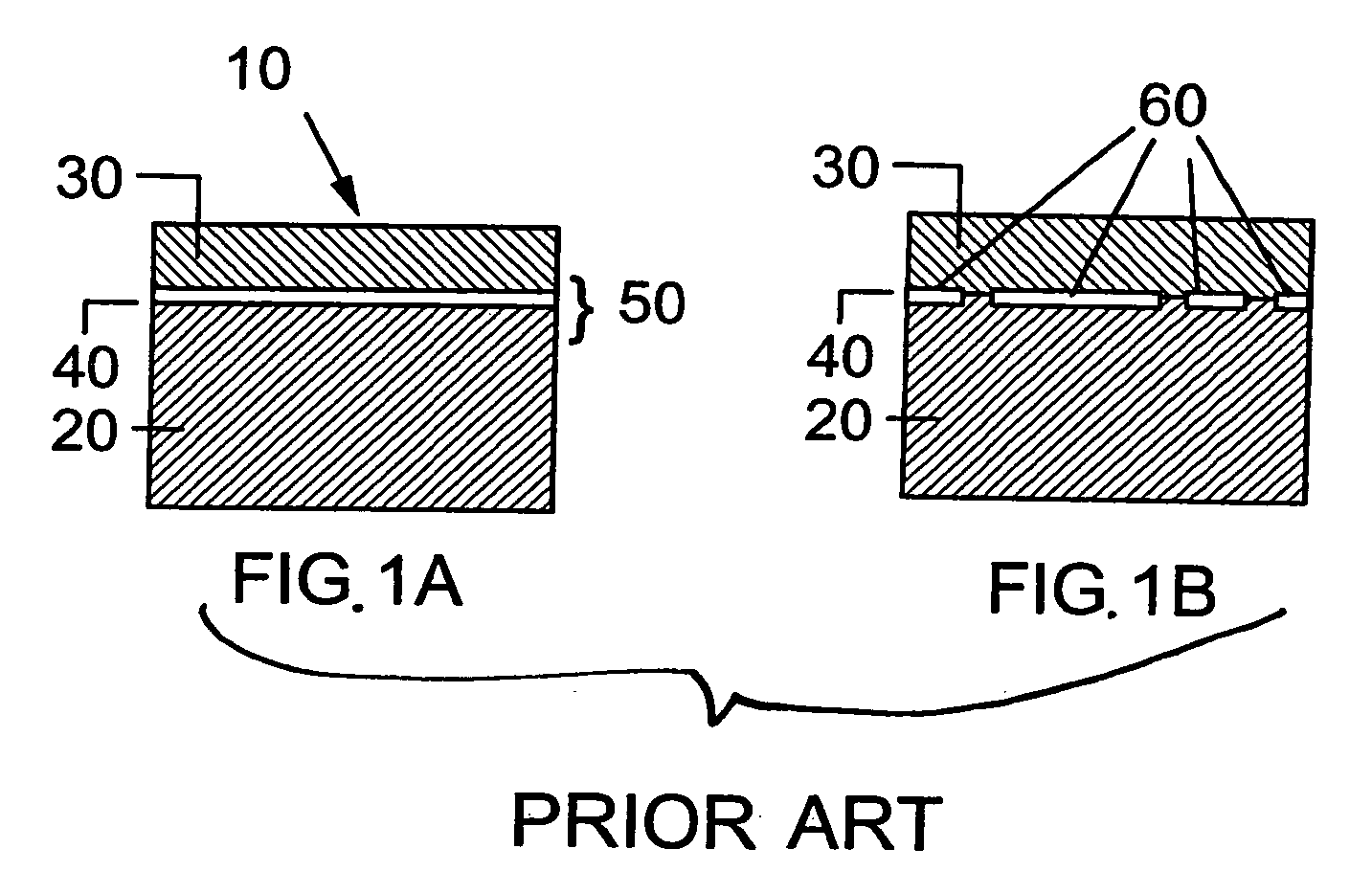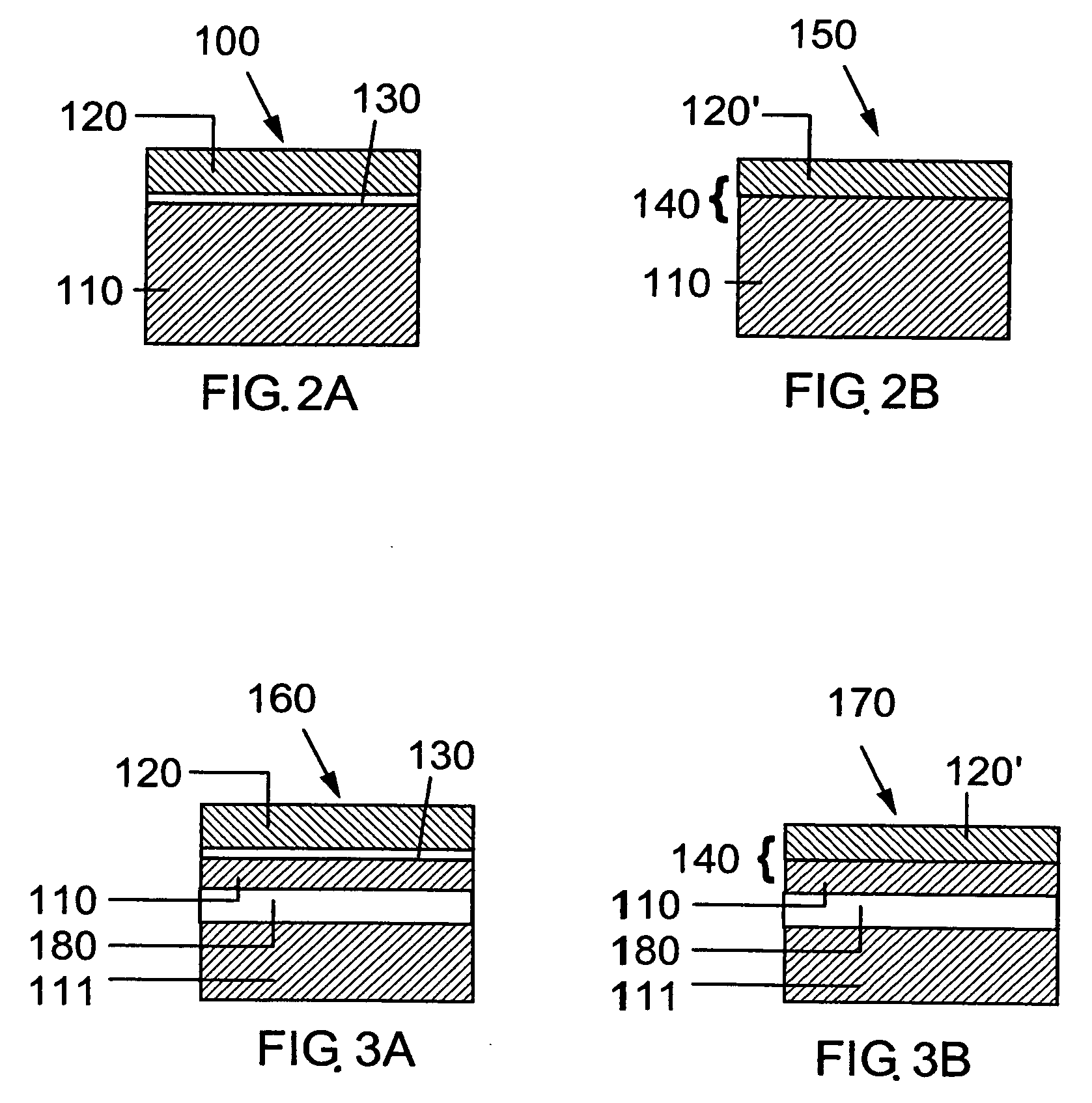Quasi-hydrophobic Si-Si wafer bonding using hydrophilic Si surfaces and dissolution of interfacial bonding oxide
a hydrophobic si and surface technology, applied in the field of semi-hydrophobic si-si wafer bonding, can solve the problems of incompatibility with an oxide-free bonded interface, less well developed technique, and more difficult and less well developed techniqu
- Summary
- Abstract
- Description
- Claims
- Application Information
AI Technical Summary
Benefits of technology
Problems solved by technology
Method used
Image
Examples
example
[0058] This example illustrates how the method of the present invention was used to remove an interfacial oxide present at the bonded interface between a (100)-oriented Si layer and a (110)-oriented Si handle wafer. Interfacial oxide removal was established by comparing transmission electron micrograph (TEM) images (FIG. 7) and optical reflectance data (FIG. 8) before and after annealing.
[0059]FIG. 7A shows a TEM image of a substrate structure 300 analogous to 100 of FIG. 2A or 5A, with (110)-oriented Si handle wafer 320, (100)-oriented Si layer 310 having a thickness of 160 nm, and interfacial oxide layer 330 having a thickness of 2-3 nm remaining after a 2 hour bonding anneal at 1000° C. The gray-scale color contrast between Si layer 310 and Si handle wafer 320 results from the difference in their crystal orientations.
[0060] The solid trace in FIG. 8A shows reflectance vs. wavelength data for the substrate structure 300. The oscillations in the wavelength range 400-800 nm (absen...
PUM
 Login to View More
Login to View More Abstract
Description
Claims
Application Information
 Login to View More
Login to View More - R&D
- Intellectual Property
- Life Sciences
- Materials
- Tech Scout
- Unparalleled Data Quality
- Higher Quality Content
- 60% Fewer Hallucinations
Browse by: Latest US Patents, China's latest patents, Technical Efficacy Thesaurus, Application Domain, Technology Topic, Popular Technical Reports.
© 2025 PatSnap. All rights reserved.Legal|Privacy policy|Modern Slavery Act Transparency Statement|Sitemap|About US| Contact US: help@patsnap.com



